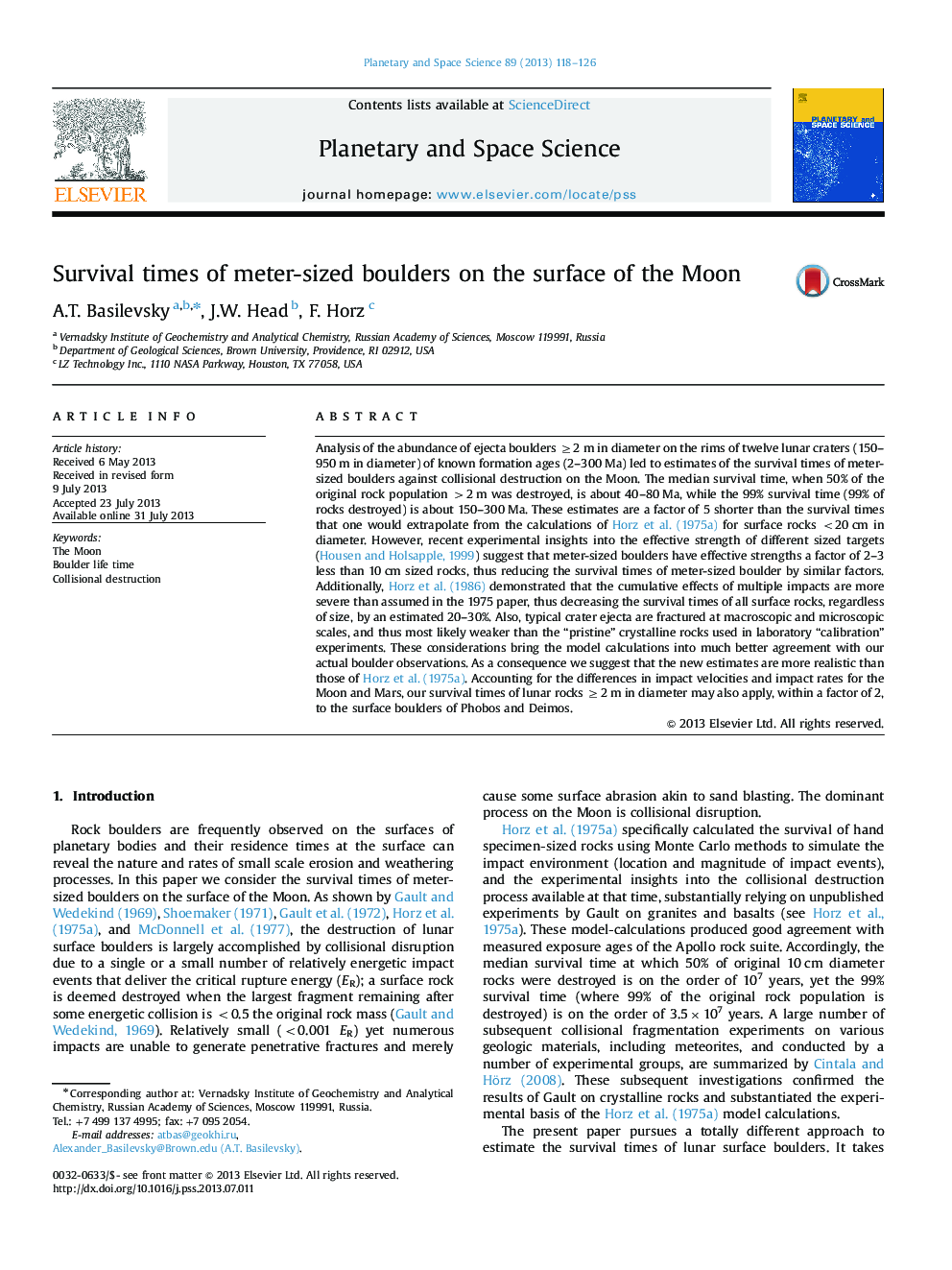| کد مقاله | کد نشریه | سال انتشار | مقاله انگلیسی | نسخه تمام متن |
|---|---|---|---|---|
| 1781240 | 1523947 | 2013 | 9 صفحه PDF | دانلود رایگان |

• Abundance of ≥2 m rocks on the rims of 12 lunar craters of known age was studied.
• The 50% survival time of such rocks is 40–80 Ma and 99% survival time is 150–300 Ma.
• These estimates are ~5 times shorter than those extrapolated from Horz et al., 1975a and Horz et al., 1975b.
• The difference is mostly due to the effective strength size effect and other factors.
• The survival times of rocks on Phobos surface are to be close to the lunar estimates.
Analysis of the abundance of ejecta boulders ≥2 m in diameter on the rims of twelve lunar craters (150–950 m in diameter) of known formation ages (2–300 Ma) led to estimates of the survival times of meter-sized boulders against collisional destruction on the Moon. The median survival time, when 50% of the original rock population >2 m was destroyed, is about 40–80 Ma, while the 99% survival time (99% of rocks destroyed) is about 150–300 Ma. These estimates are a factor of 5 shorter than the survival times that one would extrapolate from the calculations of Horz et al. (1975a) for surface rocks <20 cm in diameter. However, recent experimental insights into the effective strength of different sized targets (Housen and Holsapple, 1999) suggest that meter-sized boulders have effective strengths a factor of 2–3 less than 10 cm sized rocks, thus reducing the survival times of meter-sized boulder by similar factors. Additionally, Horz et al. (1986) demonstrated that the cumulative effects of multiple impacts are more severe than assumed in the 1975 paper, thus decreasing the survival times of all surface rocks, regardless of size, by an estimated 20–30%. Also, typical crater ejecta are fractured at macroscopic and microscopic scales, and thus most likely weaker than the “pristine” crystalline rocks used in laboratory “calibration” experiments. These considerations bring the model calculations into much better agreement with our actual boulder observations. As a consequence we suggest that the new estimates are more realistic than those of Horz et al. (1975a). Accounting for the differences in impact velocities and impact rates for the Moon and Mars, our survival times of lunar rocks ≥2 m in diameter may also apply, within a factor of 2, to the surface boulders of Phobos and Deimos.
Journal: Planetary and Space Science - Volume 89, December 2013, Pages 118–126